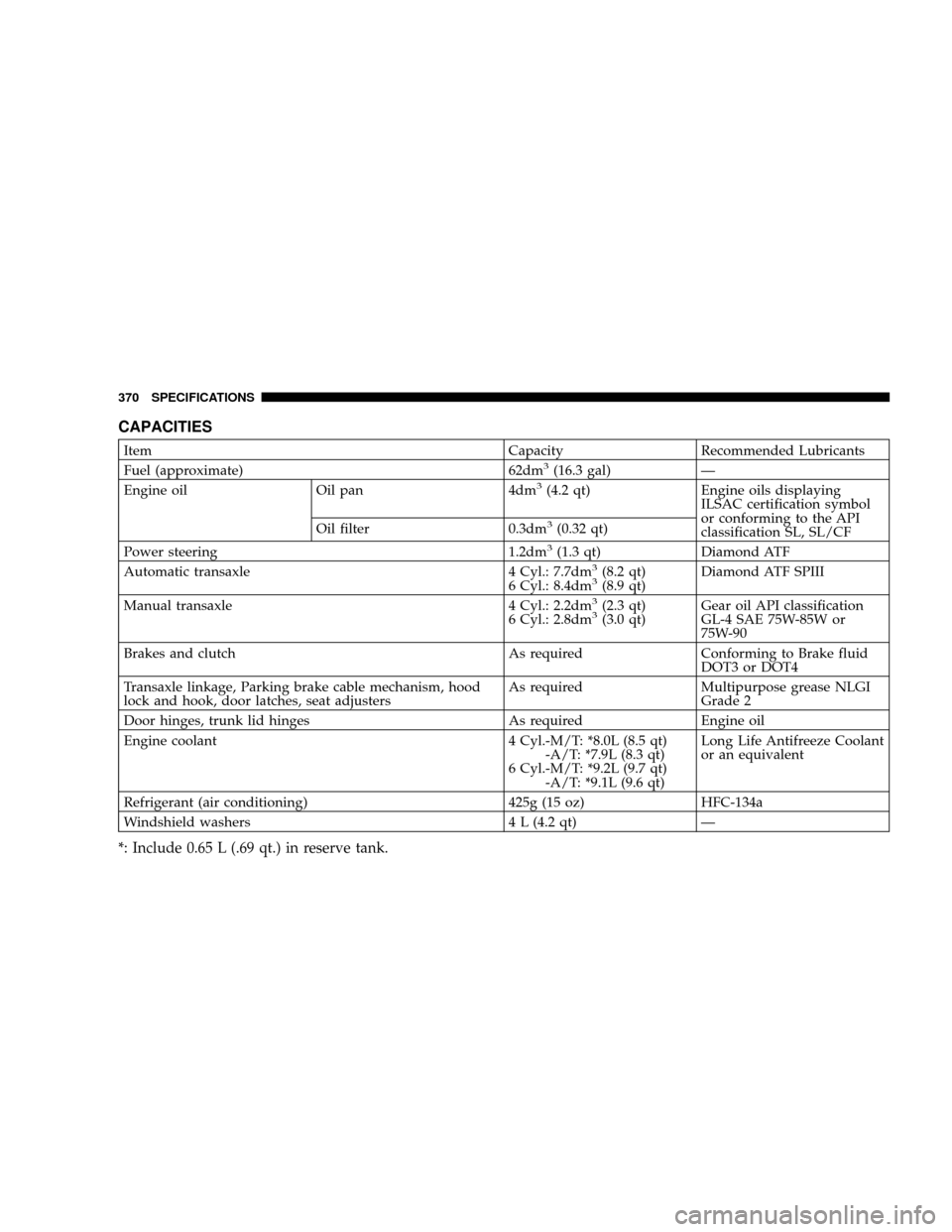Page 144 of 388

BREAK-IN RECOMMENDATIONS
Advanced automobile manufacturing techniques permit
you to operate your new vehicle without experiencing a
long break-in period of low-speed driving.
However, you can add to the future performance and
economy of your vehicle by observing the following
precautions during the first 300 miles (500 km).
It is recommended that you drive your vehicle at mod-
erate speeds during the break-in period.
1. Avoid racing the engine.
2. Avoid harsh driving such as fast starts, sudden accel-
eration, prolonged high-speed driving and abrupt appli-
cation of the brakes. These operations not only have a
detrimental effect on the engine but also cause increased
fuel and oil consumption, which could result in malfunc-
tion of engine components. Be particularly careful to
avoid wide-open throttle acceleration in low gear.
3. Do not overload the vehicle. Observe the seating
capacity. (See ªWeightsº page 365)
4. Do not use this vehicle for trailer towing during the
break-in period.
FUEL SELECTION
Your vehicle is designed to use unleaded gasoline only. It
is equipped with a fuel filler tube especially designed to
accept only the smaller diameter unleaded gasoline dis-
pensing nozzle.
WARNING!
Gasoline is highly flammable and explosive. You can
be burned or seriously injured when handling it.
When refueling this vehicle, always turn the engine
off and keep flames, sparks, and smoking materials
away. Always handle fuel in well-ventilated outdoor
areas.
144 STARTING AND DRIVING
Page 202 of 388

over curbs or parking stop blocks. Always use caution
when traveling up or down sharp inclines as your
bumper may contact the road surface.
2. Maintain specified tire inflation pressures. Replace
tires before they are excessively worn.
3. If you plan to drive in another country, comply with
the vehicle registration laws and confirm the availability
of the correct fuel.
OPERATION DURING COLD WEATHER
1. Check the battery, including terminals and cables.
During extremely cold weather, the battery capacity will
decrease. Also, the battery power level may drop because
more power is needed for cold starting and operation.
Before driving the vehicle, check to see if the engine runs
at the proper speed and if the headlights are at their usual
intensity. Charge or replace the battery if necessary.
During cold weather, it is possible that a discharged
battery could freeze.
WARNING!
The battery gives off explosive hydrogen gas. Any
spark or flame can cause the battery to explode,
which could seriously injury or kill you.
Always wear protective clothes and a face shield
when doing battery maintenance, or let a skilled
technician do it.
2. Manual transaxles may be more difficult to shift
during cold weather operation. This is normal and shift
effort will become easier as the transaxle reaches a
normal operating temperature.
Maintain low-speed operation at first to allow the trans-
axle oil to be distributed to all lubrication points.
3. Check the engine antifreeze.
If there is a shortage of coolant due to leakage or engine
overheating, add high-quality ethylene glycol antifreeze
and water. The recommended ratio is about 50% water
and 50% anti-freeze. This ratio provides adequate corro-
sion, boiling, and freeze protection.
202 STARTING AND DRIVING
Page 370 of 388

CAPACITIES
Item Capacity Recommended Lubricants
Fuel (approximate) 62dm3(16.3 gal) Ð
Engine oil Oil pan 4dm3(4.2 qt) Engine oils displaying
ILSAC certification symbol
or conforming to the API
classification SL, SL/CF Oil filter 0.3dm
3(0.32 qt)
Power steering 1.2dm
3(1.3 qt) Diamond ATF
Automatic transaxle 4 Cyl.: 7.7dm3(8.2 qt)
6 Cyl.: 8.4dm3(8.9 qt)Diamond ATF SPIII
Manual transaxle 4 Cyl.: 2.2dm3(2.3 qt)
6 Cyl.: 2.8dm3(3.0 qt)Gear oil API classification
GL-4 SAE 75W-85W or
75W-90
Brakes and clutch As required Conforming to Brake fluid
DOT3 or DOT4
Transaxle linkage, Parking brake cable mechanism, hood
lock and hook, door latches, seat adjustersAs required Multipurpose grease NLGI
Grade 2
Door hinges, trunk lid hinges As required Engine oil
Engine coolant 4 Cyl.-M/T: *8.0L (8.5 qt)
-A/T: *7.9L (8.3 qt)
6 Cyl.-M/T: *9.2L (9.7 qt)
-A/T: *9.1L (9.6 qt)Long Life Antifreeze Coolant
or an equivalent
Refrigerant (air conditioning) 425g (15 oz) HFC-134a
Windshield washers 4 L (4.2 qt) Ð
*: Include 0.65 L (.69 qt.) in reserve tank.
370 SPECIFICATIONS